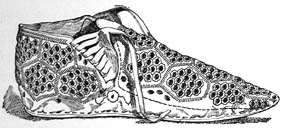Victoria
County History of Kent Vol. 3
1932 - Romano-British
Kent - Towns - Page 91
|
destroyed in 192 1—2, at the east end of
Winfield Bank (north of the road and east of the railway) 61—may
have related to funeral monuments; but, in spite of the
poverty of the records, it is tolerably clear also that more
than one house, with walls wholly or partly of cemented
rubble, flanked the Wailing Street hereabouts.
The burials and ‘small finds’ are, as usual,
somewhat better recorded than the structures. Since the
beginning of the last century, burials both by incineration
and by inhumation have been found in some numbers on both
sides of the main road. Some of these burials are specially
noteworthy. Thus, in Sole Field lay a stone tomb, 6 ft. 2 in.
long, 4 ft. 5 in. wide, and 1 ft. 9 in. deep, covered with two
large stones, to each of which an iron handle was fixed with
lead. Inside were two plain lead coffins which had apparently
at one time been enclosed in wood. Each coffin contained the
bones of a small child. With one was a gold chain resembling a
fob-chain, originally set with bluish green stones and pearls,
with three pendants; also a pair of gold bracelets with
terminals in the form of serpents’ heads, and a gold
finger-ring with a conical setting. These relics are now in
the British Museum, as are others from another burial found
near by. At a depth of about 3 ft. a ragstone pavement was
uncovered, beneath the middle of which was a large stone box
and lid. The interior of the box was cut into |
|

Fig.16 Leather shoe found at
Springhead (⅛)
(From B. M. Guide
to Antiquities of Rom. Brit.)
|
oval form and contained two large glass
urns. Both urns contained burnt bones, and one had been filled
up with a ‘ clear liquid ‘ which still remained. Between
the urns were two pairs of shoes of purple leather with
elaborate openwork pattern enriched with gold thread (fig. 16).
Outside and flanking the stone box, also under the pavement,
were large urns |
|
containing ashes. Close by, again, was
another cremation burial, consisting of two pottery jugs and
two Samian dishes (form 31, one stamped by the 2nd-century
potter, GRANIANVS) placed
in a recess formed by the smooth ends of four stones and
covered by a larger one. In one of the dishes were two
rib-bones and ashes, whilst immediately under it had been
placed a wooden box, represented now only by its bronze mounts
(British Museum). The foundations of a buttressed inclosure
wall surrounded these burials, which lay thus in a squarish
space about 58 ft. by 55˝. ft., the whole apparently
representing a walled cemetery of a type found elsewhere in
Kent (see pp. 98, 144, 158 and P1.
XIV, No. 1).
Several other burials have been recorded. Most of
them were by cremation, but others, by inhumation, were also
probably Roman. The most recent discoveries of the kind are a
woman’s skeleton found with 3rd- or 4th-century pottery in
Winfield Bank, and a male skeleton, found with an iron key, on
the south side of the main road opposite Pepperhill Lane, in
192-2.62
61 R. F. Jessup, Antiq.
Journ. viii, 338.
62 For the Springhead burials
generally, see Gough MSS. (Bodley), 1802, ii, 921; C. R.
Smith, Coll. Antiq, 110, and iii, 54 ; Arch. xiv,
37, 22! ; J. Dunkin, Springhead Memo. p. 144, etc.; Brit.
Arch. Assoc. Journ. v, 361 ; R. F. Jessup, Antiq. Journ.
viii, 337. |
Previous
Page Page 91
Next Page
Back
to Towns page listings
Contents
Page
This website is constructed
by enthusiastic amateurs. Any errors noticed by other researchers will be gratefully received so
that we can amend our pages to give as accurate a record as
possible. Please send details to localhistory@tedconnell.org.uk
|